
FAIR Data Forecast interview with Todd Carter
“Most video assets are hugely underperforming,” Todd Carter, CTO of Resolute Square, said in our Personal Knowledge Graph working group interview with him. “I know you all are practitioners used to indexable metadata, but that’s not what we have here.”
Resolute Square (RS) is a Public Benefit Corporation that counters anti-democratic propaganda. While the Voice of America (VOA) is a media organization that has focused on external authoritarian threats since World War II and has been funded by the US Federal government, RS is not a governmental entity. It’s a media company created by The Lincoln Project, a US political action committee (PAC) founded by center-right Republicans first focused on defeating the now former US President Donald Trump when he was first running for reelection.
RS concerns itself with fighting the information battle inside the US, backing the democratic system and defending it against those who push for authoritarianism and flood the media system with disinformation.
A lofty goal, to be sure.
In this interview, Carter describes the challenge of content owners like RS who are trying to boost traffic to their sites. Television networks have the same problem: Much of the content (and the value evident from viewing it) is buried in cryptic digital files with low visibility and discoverability.
Carter’s work focuses on unpacking, exposing (increasing the discoverable “surface area” of a video segmented into Key Moments) and semantically connecting many Key Moments from each video. He’s been collaborating with CEO Paul Wilton, Product Director Matt Shearer and team from Data Language and using their Datagraphs knowledge graph as a service (KGaaS) platform. The result? Users can browse a much more detailed view of what’s in each video and pick the Key Moments most relevant to them.
Interestingly, the methods Carter describes are applicable not only to websites, but also TV content providers. Below are screen captures from hist demo of Resolute Square arranged along the beginnings an interview timeline, to give you a sense of how illuminating this interview and demo was.
4:10 The Resolute Square Website, which looks conventional, but “everything is connected under the hood.”
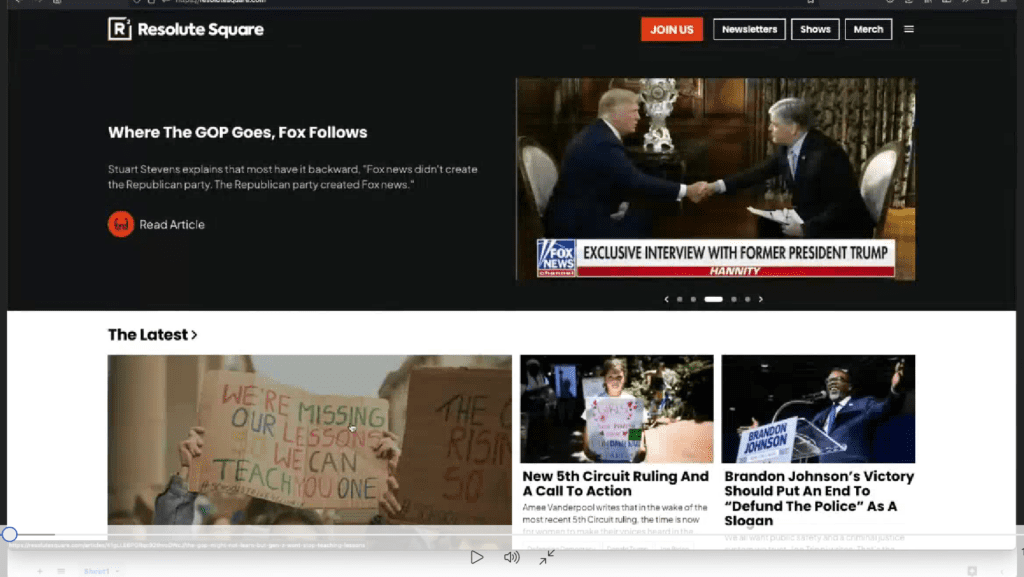
5:10 A key video moment (3 min. clip) that’s logically connected via content graph to the parent video
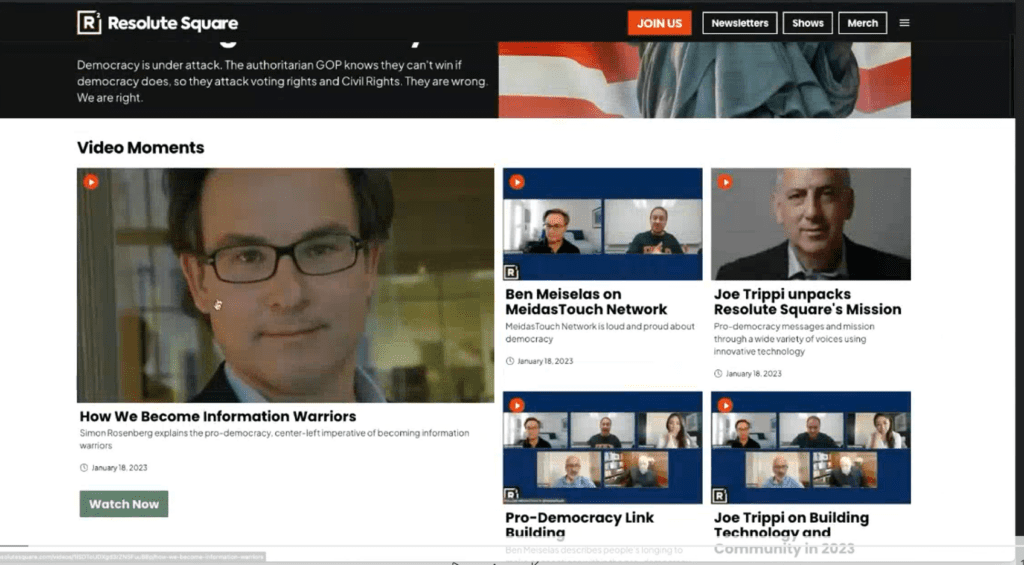
6:00 How the moments are exposed in Google search engine results pages (SERPs)
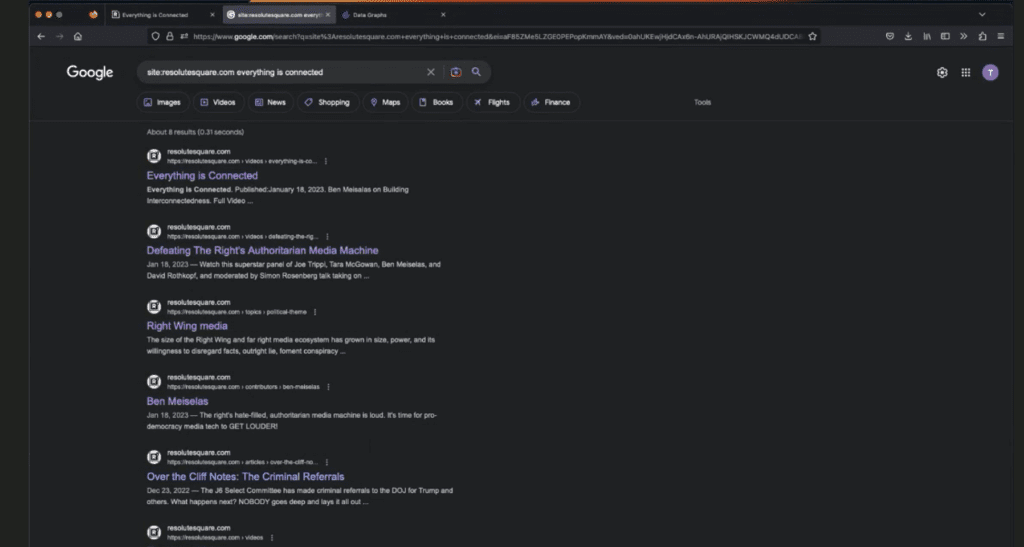
7:25 How the hyperconnected experience looks to the user from a Google search
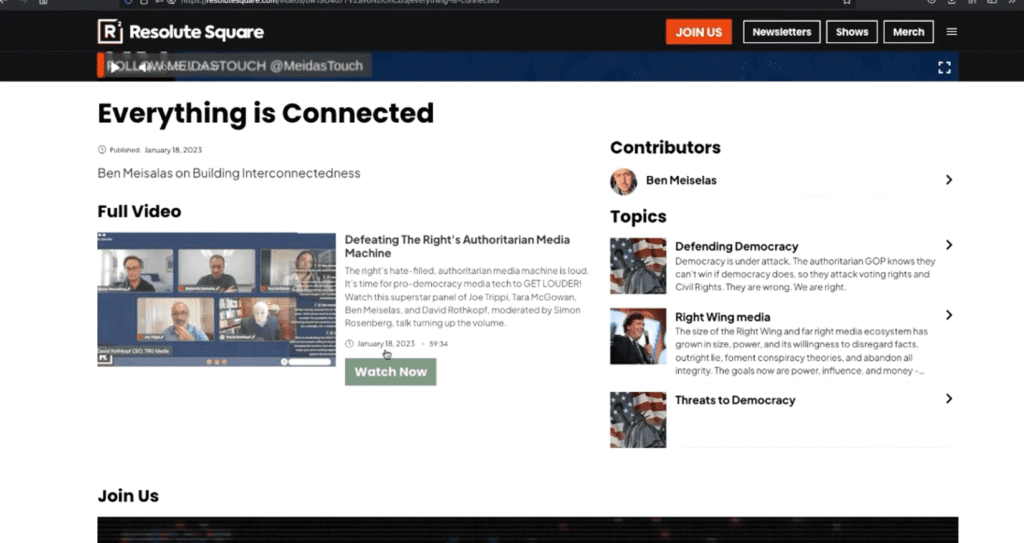
8:25 Classes and properties of the content–view of the CMS
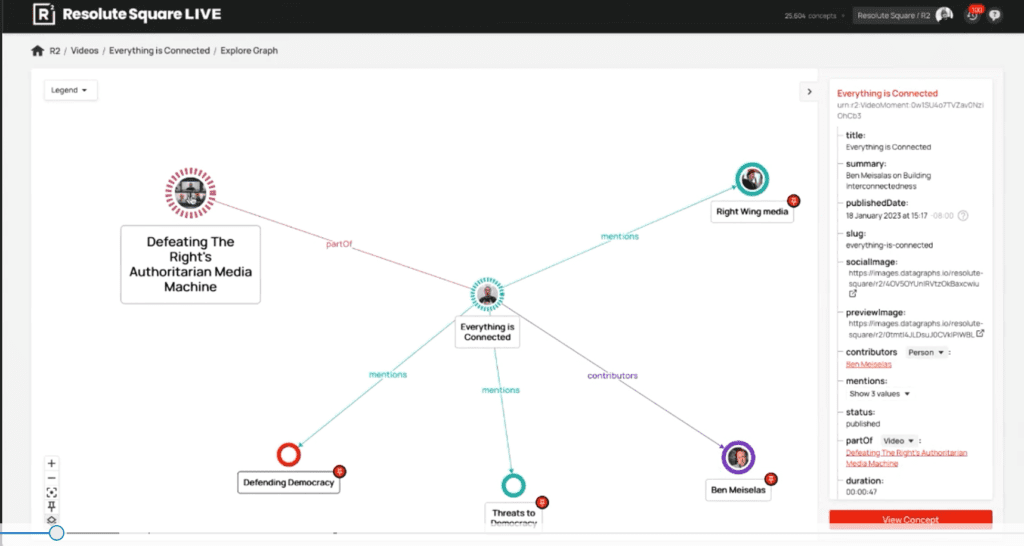
9:00 Datagraphs-enabled domain model
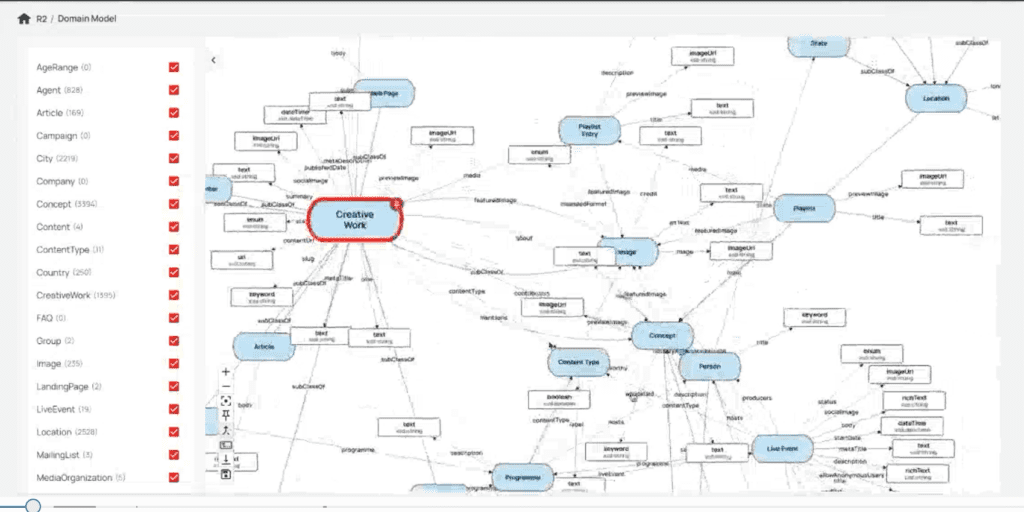
10:00 How a unitary video and its key moments are connected by theme

10:35 Many more discovery vectors when exploring article graph connections to other entities
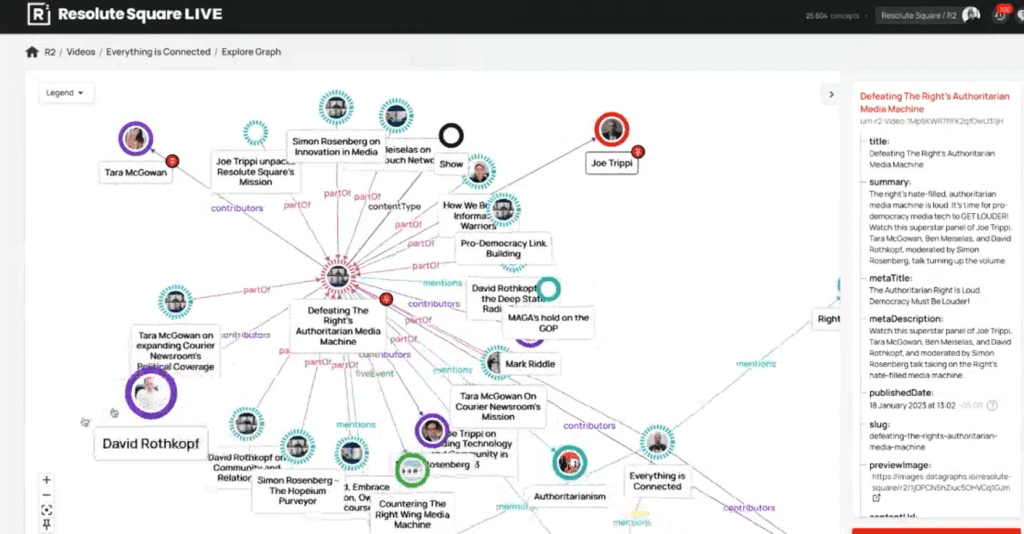
“When you can correlate user intent and the thing they’re looking for, they get happy.”
Enjoy.
